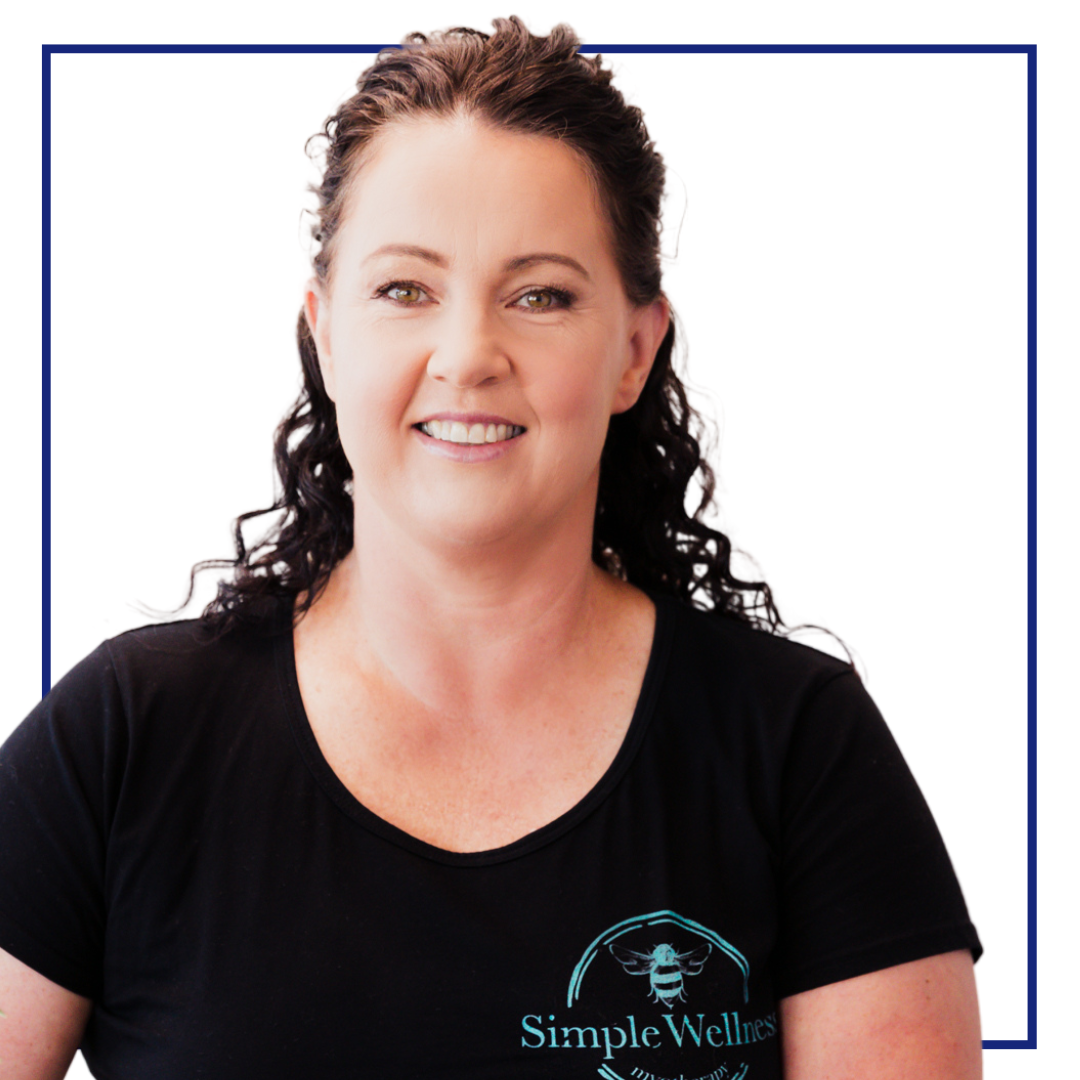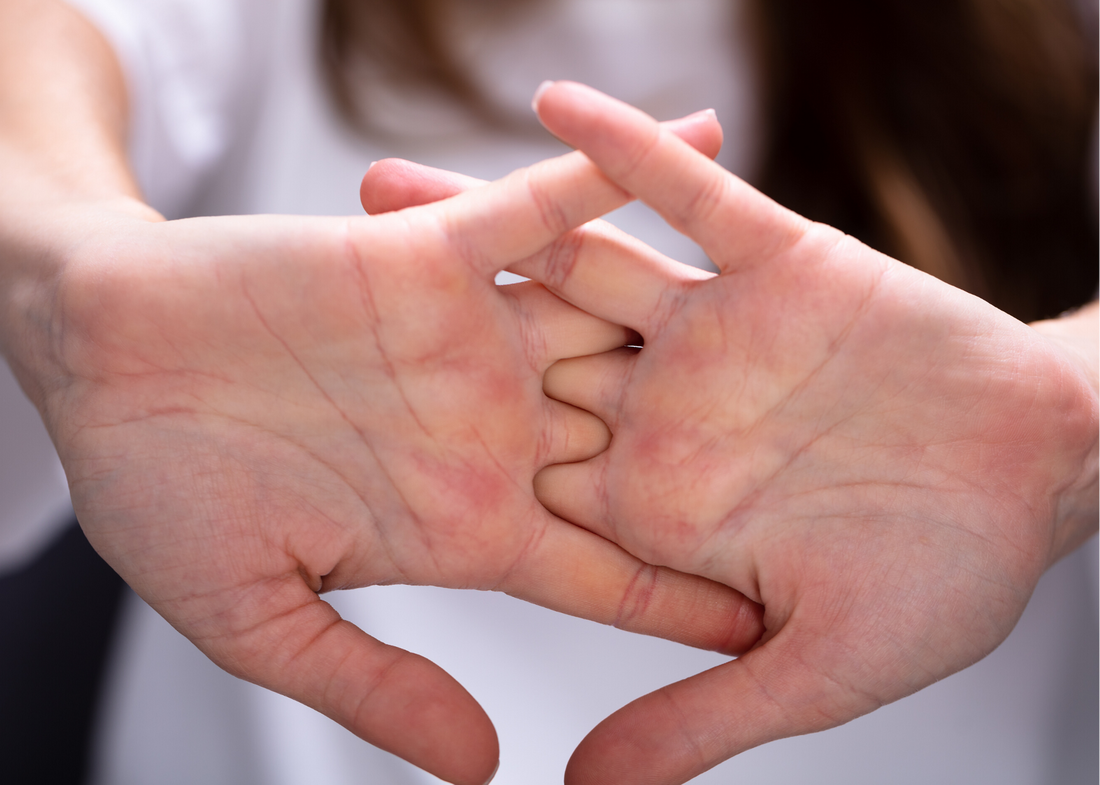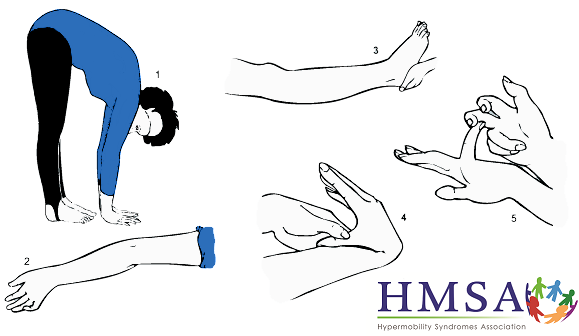|
By Duke Autret, Myotherapist Hypermobility Spectrum Disorder (HSD) and Ehlers-Danlos Syndrome (EDS) present unique challenges for individuals due to their impact on connective tissues, resulting in increased flexibility and susceptibility to joint pain and instability. While HSD is considered less severe than EDS, it still significantly affects the quality of life for those affected. Myotherapy emerges as a valuable approach to managing the symptoms of both conditions, offering relief and improved functionality. Understanding the Connections between HSD and EDS
The broad umbrella encompassing both of these conditions is called Hereditary Connective Tissue Disorders (HCTD). Both HSD and EDS share numerous symptoms, but they also exhibit critical distinctions. HSD encompasses individuals with hypermobility who don't meet the criteria for an EDS diagnosis. EDS, on the other hand, is a genetic connective tissue disorder with the possibility of also affecting the skin, joints, and blood vessels and even heart. Hypermobility Spectrum Disorder (HSD) and Ehlers-Danlos Syndrome (EDS) present unique challenges for individuals due to their impact on connective tissues, resulting in increased flexibility and susceptibility to joint pain and instability. The exact causation of these conditions remains elusive, though it's believed to stem from a blend of genetic predisposition and environmental factors. While some may inherit a susceptibility from genetics, others may develop it due to joint injury or overuse. HCTD manifests primarily with joint pain, stiffness, and instability. Additional symptoms include fatigue, digestive issues, headaches, and challenges with balance and coordination. Myotherapy Interventions for Managing HSD Myotherapy serves as an effective approach in alleviating the symptoms of HSD, offering tailored techniques to address joint pain, muscle stiffness, and fatigue while promoting overall well-being.
Embracing Relief through Myotherapy Hypermobility Spectrum Disorder poses a myriad of musculoskeletal challenges, impacting joint stability, and inducing pain and discomfort. Myotherapy can be a helpful treatment avenue, offering a range of techniques tailored to manage symptoms effectively and support long term stability through exercise. If you're grappling with HSD, consider integrating myotherapy into your treatment regimen to embark on a journey toward an improved quality of life. All of our therapists can help you with hypermobility related symptoms, and booking online is quick and easy to begin your treatment. Getting a Remedial Massage or Myotherapy appointment is becoming even easier now that we have two new therapists joining our Rowville team! Join us in welcoming our two great new practitioners to the Simple Wellness clinic! Kel Levi will be joining us from Wednesday July 27th. Kel is an experienced Myotherapist who is currently working alongside AFL Premiers Melbourne Football Club helping their players during and after their matches. She's also a qualified personal trainer, and has a wealth of knowledge in the health and fitness realm. She has a great firm massage style, loves to use dry needling to help reduce pain and improve movement, and can use her extensive background in fitness and exercise to help you find ways to stretch and strengthen your trouble areas with ease. Myotherapy and Remedial Massage with Kel can be claimed through our HICAPS machine with private health insurers like BUPA, Medibank, HCF and all other health insurers. Kel will be available: Mondays and Wednesdays 9-12, and occasional Fridays (when Melbourne Footy Club don't need her expertise in the club rooms!) Colette Corr is our new student Myotherapist, who is starting with us on Tuesday August 2nd. Colette is a final year Bachelor of Health Science Myotherapy student, which means she's completed the vast majority of the 3 year Bachelor degree program and is down to the last few subjects, including student clinical hours. We'll be offering discounted treatments with Colette while she's finishing up her degree. In addition to Myotherapy, Colette is also a yoga instructor with over 5 years experience, and loves to work with people with chronic pain and hypermobility/Ehlers Danlos Syndrome. As Colette is a student, private health claims can't be made for treatments with her. Colette will be available: Tuesdays 2-7 and Saturdays (alternating between morning and afternoon shifts) As always, bookings with our team of fantastic therapists can be made instantly online or by phoning us on 03 8204 0970.
Predicting how long your body will take to recover from injury or pain can be difficult, because each individual person will have many different factors that can influence their pain.
Your recovery time will depend if your pain is from an acute or chronic issue. We use the terms "acute" and "chronic" to describe your injury or pain type - acute being a new, fresh injury, usually where tissue damage has occurred; and chronic being a longer term condition or pain that continues well after expected tissue healing should have occurred. Acute injuries can include things like ankle sprains, hamstring tears, shoulder dislocations. Usually they happen quickly and are immediately obvious that something is wrong. Maybe you've lifted something too heavy in your gym routine and felt a twinge of pain in your back as a muscle has strained, or you've missed the last step and felt a sharp shock of pain in your hip or knee. High impact blows can also cause acute injuries, like if you have a fall, get in a car accident, or get kicked from a horse. Chronic pain can stem from an originally acute injury. Its common for people to have ongoing pain or sensitivity after an injury that causes a lot of damage. Chronic pain can also be part of many health conditions, like hypermobility and Ehlers Danlos Syndrome, Fibromyalgia, Multiple Sclerosis, and other conditions that affect your nervous system or connective tissue. Chronic pain also describes pain that comes from repetitive patterns of movement or positioning, usually starting as a mild irritation that can build up to be very painful, like De Quervains or "Mummy Thumb" which a lot of new parents experience as intense wrist and thumb pain from holding and feeding their new baby. As a very generalised observation, acute injuries tend to follow fairly predictable recovery pattern as long as normal tissue healing occurs. In fact, the pain of an acute injury can often go away even before the tissue healing has completed, like in the case of a mild ankle sprain where you may be able to weight bear and return to normal movement within a week, even if the tissue around the ankle is still in repair mode. The severity of the acute injury will usually give us an indication of your expected healing time - a mild injury takes a shorter time to recover than a severe injury, this follows our common sense understanding even without medical training. But what about chronic injuries or pain? How can we estimate how long an old injury will take to feel better? And importantly, can we realistically expect long term pain like a very old injury or pain from a lifelong disorder or disease to fully recover? This is where pain starts to become complicated, because in chronic pain patients there are lots of factors involved in the pain outside of damaged muscles, joints or nerves. Chronic pain in one area of your body can lead to pain developing in other areas when your body tries to find different ways of getting things done. If gripping a heavy object becomes painful in your wrists, you may find yourself balancing it on your forearms and tilting backwards from your pelvis instead. As a short term work around this might be ok, but over time you might find yourself with chronic wrist pain AND chronic lower back and hip pain. Unfortunately, if you have a few "layers" of pain areas, this can mean that its likely to take longer to unravel some of the patterns that have lead your body to being in pain. Chronic pain tends to be unpredictable in how long it may take to resolve. For people with pain stemming from lifelong conditions like genetic disorders, autoimmune disease or neurological disorders, the pain is likely to come and go in flares, and our aim for these people is to reduce the severity and frequency of the flares that are a part of their condition. What other factors can contribute to how quickly you recover? Adaptations to movements and positions: Firstly, we need to identify movements or positions you currently do that either exaggerate or relieve your pain. Some of these will be easier to adapt than others - if you notice sitting longer than an hour increases your pain, an easy adaptation may be to get up every 30-60 minutes for a brief stretch. If you spend the majority of your day sitting at your computer, we can look at starting and ending your day with a back extension exercise to decompress your lower back. If we find some movements that relieve your pain, we can look at ways of increasing your time spent doing those movements. We know that we won't be able to change all of the repetitive movements and actions that are needed in your daily life at work and at home, so realistically understanding that some of those things are contributors to your pain means we need to focus on the things we can influence so we can reduce the impact of the things we can't change. There are lots and lots of options for changing some of the movement and position habits your body has built up, and our therapists can help with some suggestions during your appointment. Exercise: Finding a suitable type of exercise for your pain can be very helpful in building strength around the area and in stimulating your body to release its own brand of feel good hormones and neurotransmitters that reduce pain sensations. Exercise might sound very overwhelming to start off, especially if you have a lot of interconnected areas of pain, so our therapists will start you at an appropriate level for where you are at. That might be some mild stretches, a gentle walk or swim, or even a visualisation of doing certain movements. Diet/Nutrition: What you eat influences how your body repairs and recovers. If you have food sensitivities or intolerances this can also effect your bodies inflammatory response - the more inflammation, the more sensitive our nervous system is to pain. If you were already eating a good diet prior to your injury, you are likely in a better position to recover quicker than someone who was eating nutrient-poor food or a diet that caused inflammation. A nutritionist may also be able to recommend supplements that can support your bodies natural healing processes. Fitness & General Health: You may be more likely to have an easier recovery from injury if you were in fairly good health and physical condition before your injury. Your recovery may be slower if you have pre-existing health concerns, including things like diabetes or autoimmune disease. Its never too late to start working towards a healthier lifestyle! Sleep: Good sleep is crucial to good healing. Pain can make sleep very difficult, and this can become a bad cycle of intense pain leading to poor sleep, resulting in feeling fatigued, which causes pain to increase, and so on. Breaking this cycle and getting some proper rest can help with recovery. Using extra pillows to support your body may allow you a longer and deeper sleep. There are also lots of great sleep apps or meditations that some people find useful in falling asleep or getting back to sleep if you wake up in the night. Speak with a nutritionist or pharmacist about night time supplements that can help aid with sleep. Nervous System Health: Chronic pain is often just as much about your nervous system as it is about your musculoskeletal system. This means if you are highly anxious, stressed, depressed, or just have a lot on your plate right now, that your pain levels may be higher than normal. The nervous system controls your entire body, so while we're not saying "your pain is in your head, you're making it up!" what we are saying is that if your nervous system is working overtime then its much more likely that your pain will be noticeable even in response to small actions. Think of it like a kettle that has just boiled, it takes much less time to reboil the kettle because its already hot. The nervous system is similar, it will take much less action for your nervous system to turn up the volume on your pain because its already on high alert. Finding ways of supporting your nervous system is crucial for long term chronic pain conditions. This is also why medications for anxiety and depression are often prescribed for people with ongoing pain. There are lots of natural or herbal supplement options available through Naturopaths and health stores. Setting a nervous system health routine for yourself is also a hugely valuable part of managing stress and overwhelm, and this might include things like mindfulness, meditation, relaxation, affirmations, or anything else that helps you to tone down nervous system activity. Self Care Tools: Treatments with your practitioner are great, but having the tools and know-how to apply treatment principles at home goes a long way to helping you take charge of your recovery. We can teach you how to use a range of tools for releasing tight spots in your body so that you have some tricks up your sleeve for between treatments. Treatment: Get the type of treatment that your body responds to. Some people respond best to hands on treatments like massage, cupping and dry needling. Some people go better with active exercise based treatments. Our therapists can advise you of the treatment types that have been reported to work best for your type of pain, but ultimately each individual body can react differently, and we'll work towards finding the best combination of treatment techniques for you. Be aware that trying too many treatment types at once for the same issue can make it very difficult for any of your health practitioners to determine which treatment is effective. This is also why we'll often pick a small number of Myotherapy techniques to use in each treatment, because if we use absolutely everything we know all at once, its very hard to know what worked and what didn't. Go into your first treatment expecting that it might take your body a little while to start making long term changes, especially if your pain has been there for a long time and if repetitive movements and positions seem to be a big part of your pain hanging around. Try your first appointment with us for $97 (normally $115) Book an appointment with us now. We've all experienced a joint making a click, crack or crunch noise at some point. Some people much more than others. But what is it that causes a joint to become noisy like this? And does it spell bad news for your joints down the track? Cavitation - The Gas Bubble
Cavitation is normal and not dangerous. Most popping and cracking joint noises are likely to be caused by cavitation - that is, the formation of a gas bubble within the joint. Now you may have heard that joint noises are the popping of an existing gas bubble within the joint, however an interesting study published in PLoS One (Public Library of Science) in 2015 used real time visualisation of a joint under MRI to see exactly what occurs in the joint space when you crack a knuckle. What they found was that when the joint separated, it formed a bubble, rather than popping an existing bubble. Its called tribonucleation - this complicated sounding word describes the process of creating gas bubbles between two objects. It involves two solid surfaces that are covered in a liquid that contains dissolved gas. The surfaces resist being pulled apart because the liquid creates a suction effect, until enough force is generated to suddenly break the contact with each other, resulting in creating a gas bubble. In a joint, the solid surfaces are the two bones and articular cartilage surfaces that form the joint. The liquid containing dissolved gas is the joint fluid, called synovial fluid, that lubricates the joint surfaces to make it easy and smooth for the cartilage-covered bony ends to slide over each other. When a joint is put under enough force, the bony ends can be moved far enough from each other to break their contact momentarily, and cause that familiar pop noise. This can happen from purposefully trying to crack a joint, like cracking your knuckles, or from movements like squatting which can make your knees crack, or doing a spinal twist stretch which might crack your back either intentionally or unintentionally. People with hypermobility in their joints can experience a lot more popping and cracking noises than other people. This is because their joints tend to have more freedom of movement due to having stretchy ligaments so its easier for cavitation to occur. The role of ligaments is to connect the two bones of a joint together and keep it stable and stop the bony ends from separating. Will it cause arthritis? Its unlikely that cracking your knuckles and achieving that satisfying cavitation "pop" will cause you to develop arthritis in the long term, there are many more factors involved in developing arthritis. Movement of Tendons over Joints These sounds tend to be more of a snapping type of sound, because its the sound of the tendon moving over a bony area of the joint. Tendons are the strong connective tissue bands that connect muscles to bones, and for muscles to move a joint they need to cross over it. This means that sometimes the tendon will have to slide over a bony point where it will have to stretch like a rubber band to maneuver it, and will "snap" back due to elasticity of the tissue. Common snapping sounds from tendon movement can be heard in the knees, hips and shoulders. These movements shouldn't be painful, but if you do start to feel pain when you're hearing or feeling the movement of the tendon over your joint, get it checked out. Your myotherapist may be able to make a big change to the discomfort through simple muscle relieving techniques. Changes in Articular Cartilage Sounds from changes in articular cartilage tend to sound crunchy, crispy or "like gravel". Its called crepitus, but the sound is often worse than the sensation, and many people don't feel any pain at all. The term "bone on bone" gets thrown around, and this scares a lot of people because they visualise the bones literally grinding away at each other. The reality is that the ends of our bones are covered in articular cartilage, which is a smooth, squishy padding on the ends of bones that makes movement easy, fluid and painless and which prevents any direct "bone on bone" contact. Over a lifetime there will be normal changes to your cartilage, just like there is to a car, or a pair of shoes, or a well used garden pathway. Sometimes the changes in the cartilage can be that it becomes torn or damaged, for example if you have an accident, take a big impact to the joint, or get an infection. It can also build up over time from things like high intensity sports, repetitive use of the joint, or increased load on the joints from growing quickly or rapid weight gain such as pregnancy. Damaged cartilage can break down and remain in the joint space, which means the once-smooth surfaces become a bit rough, and there may be particles in the joint fluid. This can cause noisy movement of the joints, but its often painfree. Sometimes this can cause the joint to become irritated, which may cause it to swell up or become hot and inflamed, and then it can be temporarily painful. Do you need surgery? Many kinds of surgeries are used for joint problems, but not every person needs to go down the surgery avenue. Surgeries range from very short day procedures like arthroscopes which clean out cartilage debris in the joint space, to full joint reconstruction or replacement surgeries. Many people find they can prevent surgery for a long time with a tailored exercise program to strengthen the joint and reduce load on it, and using supports like braces or taping. Surgery is not guaranteed to fix the problem. Try your first treatment for $97 (normally $115) If you're having significant pain with your noisy joints, let us help - book an appointment with us today! Many people know what it’s like to have a loose joint. Maybe you even considered yourself ‘double jointed’ when you were in primary school. But hypermobility is something that can be benign, or it can be a serious concern in some cases. So let’s look at hypermobility and how you can support a loose joint naturally. What is hypermobility?
Hypermobility is when a joint has a greater range of movement than usual. This can be caused by a handful of factors, including:
Is hypermobility a bad thing? Not always. Some people can actually train their joints to become hypermobile over time – think people who do gymnastics or calisthenics. This isn’t a problem, as long as the joint isn’t damaged and the muscles are strong enough to prevent the joint from slipping out. There are also people that have one or more hypermobile joints, but don’t have any problems as a direct result. This is generally described as benign hypermobility. But it can be problematic for some people. Sometimes, it’s a short-term problem – like if you dislocate a shoulder during football. This will mean you need to nurse the joint back to normal mobility to prevent further injury. Sometimes, hypermobility is part of a bigger concern. There are conditions that present with hypermobile joints, including most forms of Ehlers-Danlos Syndrome and Marfan Syndrome. Sometimes, hypermobile joints that become problematic are the first clue that there is an underlying issue. Tips to support a hypermobile body part If you have some hypermobility and it’s not causing you any issues, you might be just fine. But if your joint is causing you pain, is unstable or affecting your life in any way, here are some tips to support it back to health. Keep exercising within your limitations The body thrives off movement, and it boosts blood flow throughout, which is needed for healing. If you have an injured body part, do any kind of exercise that doesn’t cause pain or discomfort. For example, if your shoulder is the issue, go for a daily walk still. If it’s an ankle, keep doing upper body work at the gym that doesn’t require standing. Remember, if you’re not sure how to exercise safely due to injury, the best course of action is to consult a myotherapist who can assess the situation for you. Use taping and other tools to increase proprioception One issue that is common with hypermobile joints is a loss of proprioception. Proprioception is where your brain thinks your joint is. If you lose proprioception, your body can start to think that the correct position for your joint is partially dislocated, or subluxed. A good tool to use to increase proprioception is taping. By taping a joint, you can stabilise the joint when it is very unstable. Once the joint improves, kinesiotape can help to increase your awareness, or proprioception, of the joint. In the clinic, I offer both rigid and kinesio taping services. In fact, return clients can book in a follow-up taping session, so we can re-tape a loose joint until it regains stability. To book a taping session, contact me directly. If your joint is particularly loose, you can also consider tools like splints, supports or orthotics to help with proprioception. These are most useful for highly unstable joints, or for times when you can’t focus solely on where a joint is. Not sure which tool is best for you? Ask your friendly myotherapist. Be cautious with stretching and yoga Stretching and yoga can have oodles of benefits. But if a joint is already stretched out of place, the wrong stretches or yoga poses can exacerbate the situation. Just because you can move into an extreme stretch doesn't always mean you should - often the safest option is to stop short of your absolute maximum stretch, because here you'll have the most control over your movement. Control at our very end range of movement can be difficult, and if your joints are prone to dislocation and instability due to loose or unreliable ligaments then ideally you should be aiming for a stretch where you can still keep excellent muscle control over the joint. If you’re not sure what is safe to do, have a chat to your practitioner or yoga teacher. Work with a hypermobile-literate myotherapist If your body is sore, a massage therapist can relieve some pain. But if you want to get the injury rehabilitated, you want to work with a myotherapist who is familiar with hypermobility. With myotherapy, we can not only give immediate relief using massage and other treatment techniques, but also put together a personalised treatment plan. A hypermobility management plan will include targeted strength and proprioception exercises. By rebuilding the muscles and teaching your joint where it should sit, you can get back on track. I’ve had the opportunity to work with many people who have hypermobility – both short-term and chronic. So whether you have a loose joint post-injury or a condition like Ehlers-Danlos Syndrome, I’m happy to help. Click here to book in an appointment. Everyone knows someone who is a bit of a klutz. But often, there is a reason behind someone being naturally clumsy. It all comes down to what we call proprioception. What is proprioception?
To put it simply, proprioception is a fancy way of describing where your brain perceives your body to be in space. If you have good proprioception, your brain knows that your arms and legs are where they are. But if you have issues with proprioception, your brain might think that you’re a little more to the left or right of where you actually are. This is where it’s common for people to do things like walk into doorframes, stub their toe or miss a step. Some people can be born with a reduced sense of proprioception, particularly if they have neurological conditions such as autism. Others may have proprioceptive issues because of hypermobile joints. Sometimes, proprioception of a particular body part can be reduced through injury, such as a dislocation. What are signs of proprioception issues? There are some common signs of proprioception issues, including:
It can also come with other signs, depending on the cause. Proprioceptive issues will come with sensory signs in people with autism. Hypermobile people will often experience more injuries such as rolled ankles because they have more flexible joints than most people. Have you ever noticed that if you have an injury, you will be more likely to bump that injured limb or area? Thats because that area is where the misinformation is coming from - for example, I cut my finger a few weeks back, and managed to bump it on something on at least 3 different occasions that day! My general awareness of that finger was raised, but my ability to hone in on the location-specific proprioception was decreased due to injury. How can I fix my proprioception? The good news is, you can work on your proprioception and reduce the clumsiness. Proprioception is influenced by information from your nervous system and your balance. Here are some ways to retrain your brain and increase body awareness. Move your body A lot of people will avoid exercise because they think they are clumsy. But the more that you move your body, the more chances your brain gets to correct itself. So don’t avoid exercise – just stick to gentler options while you retrain your brain. Retrain your balance There are specific exercises that can challenge proprioception and retrain the brain. Stability and balance exercises are the most effective. These start with very simple and supported movements, then increase in difficulty as your proprioception adapts. For example, you might stand on one leg with your eyes open. Once you can do that easily, movements of your raised leg can be included which will challenge your balance. If that becomes easy, you can try it with your eyes closed, or add a wobble cushion or balance board. Exercises will need to be tailored to your specific proprioceptive needs. As you can see from the example above, there are many stages of these exercises that progress to harder and more challenging movements as your proprioception enhances. Neurons that Fire Together, Wire Together Have you heard this phrase before? The brain loves short cuts, so movements, actions, thoughts and sensations that are often felt together can become neurally linked. We can use this to our advantage by using exercises and movements in a way that can "rewire" the proprioception of a joint so it relearns its movement or activation patterns. Taping Using tape can help to retrain your proprioception in conjunction with stability exercises. It helps to indicate where the body part is because the tape is slightly stretched on your skin for a number of days - your brain gets a consistent signal from the sensation receptors on the skin saying "Hey! Here I am!". Taping can also help with holding the joint or body part where it should be, preventing issues such as hunching or rolling of the shoulders. It’s best to get taping done by a qualified practitioner who can tape you correctly. This is why I offer taping sessions for my clients who need re-taping between appointments. Do you want to work on retraining your brain and increasing your proprioception? We can put together a personalised management plan to help. Try your first treatment for $97 (normally $115!) Book in an appointment today to get started. |
Meet Our Team
We have a team of great practitioners available 7 days a week at our Rowville clinic. Archives
July 2024
Categories
All
|
Got a question about Myotherapy?
Contact Mel by phone, email or Facebook
|
Simple Wellness Myotherapy & Remedial Massage Clinic
Shop 12B 150 Kelletts Rd Rowville VIC 3178 |
Phone us on
03 8204 0970 |







 RSS Feed
RSS Feed